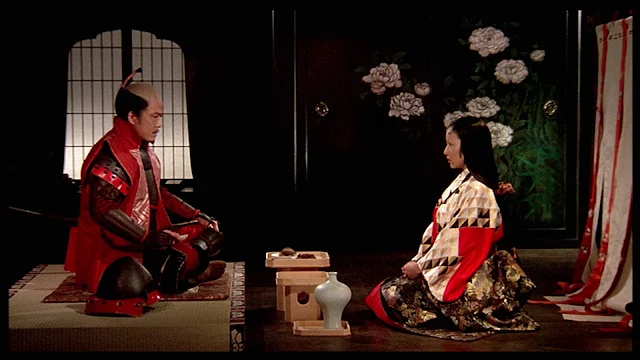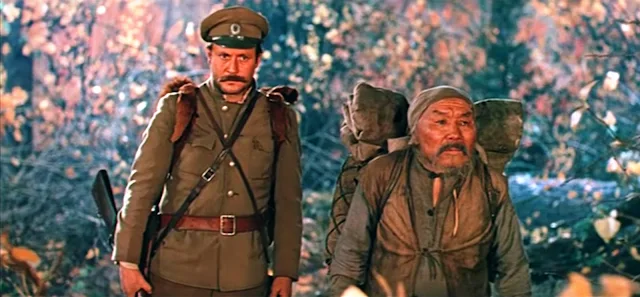 |
| Isao Numasaki and Chieko Nakakita in One Wonderful Sunday |
Yuzo: Isao Numasaki
Masako: Chieko Nakakita
Yamamoto: Atsushi Watanabe
Dessert Shop Owner: Zeko Nakamura
Yamiya: Ichiro Sugai
Dance Hall Manager: Masao Shimizu
Waif: Shiro Mizutani
Sono: Midori Ariyama
Apartment Superintendent: Toshi Mori
Director: Akira Kurosawa
Screenplay: Akira Kurosawa, Keinosuke Uekusa
Cinematography: Asakazu Nakai
Production design: Kazuo Kubo
Music: Tadashi Hattori
Akira Kurosawa's
One Wonderful Sunday brings to mind two near-contemporary films: Frank Capra's
It's a Wonderful Life (1946) and Vittorio De Sica's
Bicycle Thieves (1948). In its own odd way, Kurosawa's film blends a bit of the fantasy of the Capra film with the neorealism of the De Sica, though it doesn't quite succeed in the attempt. All three are products of the postwar world. The Americans, having won the war, naturally put the stress on optimism; the Italians and the Japanese, having lost, and having been sunk in the economic crisis caused by losing, naturally put the stress on endurance, on clinging to shreds of hope. Kurosawa's protagonists are a young couple, Yuzo and Masako, who can't afford to get married, but pool their resources, a meager 35 yen, to try to enjoy a Sunday together. Yuzo's depression shadows the outing, but Masako is determined to cheer him up. She's a little bit bossy, however -- when they first get together at the train station, he has just picked up a half-smoked cigarette from the pavement, hoping to smoke it later, but she strikes it out of his hand. Then she drags him into a model home in a new housing development, even though it's well beyond their means and is, he notes, shoddily built. Their housing plight -- he lives with a friend, she with her sister's family -- is emphasized when they visit a place that has a room to rent, only to discover that it's only minimally livable and that they can't afford even that. But Yuzo manages to climb out of his depression when he finds a bunch of kids playing baseball in the street and joins their game. And so it goes through the day as they oscillate between depression and hope. A visit to what remains of the city's zoo confronts them with some sad-looking animals. A large, fat pig slumbers in a cage that used to belong to a lion, causing Yuzo to remark, "The world is run by pigs." And then it starts to rain. Yuzo suggests that they go to his place -- his roommate will be out until late, he says -- but Masako resists, angering him. Then she notices a poster for a concert featuring Schubert's Unfinished Symphony. They can afford the 10-yen tickets, so they run through the rain to the concert hall. But scalpers have bought up all the 10-yen tickets and are selling them for 15 yen, and when Yuzo protests, they beat him up. When they go to Yuzo's room after all, where Masako treats his wounds, he tries to persuade her to sleep with him and she leaves. More depressed than ever -- even the roof is leaking -- Yuzo broods until Masako returns, contrite, but her sobs make any further sexual moves impossible, so they decide to spend the last of their money in a coffee shop. Even there, they are stymied: The coffee shop bills them for café au lait, instead of the regular coffee they thought they ordered, so Yuzo leaves his overcoat, saying he'll return the next day to make good on the bill. Now penniless, they begin to live in their dreams. They pretend that the ruins of a house are the coffee shop they want to open some day and, discovering an old band shell, try to pretend that Yuzo is conducting the performance of Schubert's Unfinished that they missed. At this point, Kurosawa departs from neorealism and has Masako address the movie audience directly: If they'll applaud for all the sad, impoverished lovers in the world, then she and Yuzo will be able to hear the music he's pretending to conduct. It works, and they hear the music. They part as the film ends, promising each other to meet again next Sunday. In fact, Kurosawa's borrowing from
Peter Pan and asking for the audience's applause didn't work in Japan, where audiences were simply puzzled, though when the film was shown in France years later, French audiences responded enthusiastically. The sentimentality of
One Wonderful Sunday is hardly characteristic of Kurosawa, but it's tempered by some masterly use of locations -- blended with more stylized studio sets -- and good performances by the leads: Isao Numasaki, in fact, does manage to evoke both James Stewart in Capra's film and Lamberto Maggiorani in De Sica's, even though he couldn't have seen the latter and probably didn't see the former. There are moments when Kurosawa prolongs the depression of Yuzo and Masako a bit too much, and the film seems a little overextended for the slightness of its narrative, but it's clearly a formative work for a master director, as well as a heartfelt depiction of the plight of his country.









